Live on the homepage now!
Reader Supported News
The progressive senator held a second press conference this week and criticized moderates who are holding up Democrats’ broad social spending bill.
The Senate Budget chair railed against moderate opposition to a prescription drug overhaul that top Democrats want to include in Biden’s massive social spending package, arguing that centrists rejecting the measures are bankrolled and beholden to the pharmaceutical industry. It was the kind of riposte he'd refrained from making for weeks as a handful of House and Senate moderates refused to support the party's $3.5 trillion spending blueprint.
“Take a hard look at those people who are opposed to strong legislation to lower the cost of prescription drugs and take a look at their campaign finance reports,” Sanders (I-Vt.) said during a briefing with reporters. “See where they get their money, how many of them get their money from the pharmaceutical industry and the executives there. And I think there will be a direct correlation.“
The Vermont Independent’s comments come after Sen. Kyrsten Sinema (D-Ariz.), a key Senate centrist, told the White House that she‘s opposed to the drug pricing proposals drafted by House Democrats, which could raise hundreds of billions of dollars to help finance Biden‘s party-line bill. A number of House moderates — most of whom have received substantial donations from the pharmaceutical industry and represent districts where drug companies employ thousands of people — also say they’re concerned about the bill’s impact on the development of new cures and therapies, echoing arguments the industry itself is pushing in ad campaigns.
The opposition from House and Senate centrists has been enough to threaten the broader spending package, which Democrats are trying to pass along party lines in the coming weeks. First, Democratic leaders have to secure an agreement between progressive and centrist members of the party on an overall price and framework for the bill, hoping it will allow for movement on Biden’s bipartisan infrastructure package.
“I am going to fight for the strongest piece of legislation that we can,” Sanders said, when asked what he could ultimately accept on drug pricing. “I think I’m going to begin calling out some of those members of Congress.”
Sanders made the remarks at his second press conference this week, held just as the president’s multi-trillion-dollar agenda remains stalled — in large part over confusion as to what key moderates like Sinema and Sen. Joe Manchin (D-W.Va.) will ultimately accept.
Manchin has expressed support for drug pricing reform, praising the idea when protesters recently kayaked up to his house boat. But he has has repeatedly said he’ll only accept a price tag of $1.5 trillion for the bill, or $2 trillion less than the figure House and Senate Democrats have worked with for months.
“It makes no sense at all that we don’t go out and negotiate,” Manchin told reporters this week on drug pricing. “The [Department of Veterans Affairs] does a tremendous job at it. Medicaid does it. Why doesn’t Medicare?”
Sanders held another press conference on Wednesday to scold both Manchin and Sinema for holding up the party-line spending bill. He echoed a lot of the same frustration on Friday, refusing to engage on questions about slashing the overall price tag of the legislation or shrinking its size to appease moderates.
When asked if he should sit down with the two centrists to work things out, Sanders said, “This is not a movie.”
“I’m not here to attack them or question their motives or anything else,” he said. “Manchin’s views, I know, are different than mine.”
“But the point that I’m trying to make … It is simply not fair, not right, that one or two people say, ‘My way or the highway,‘” he added.
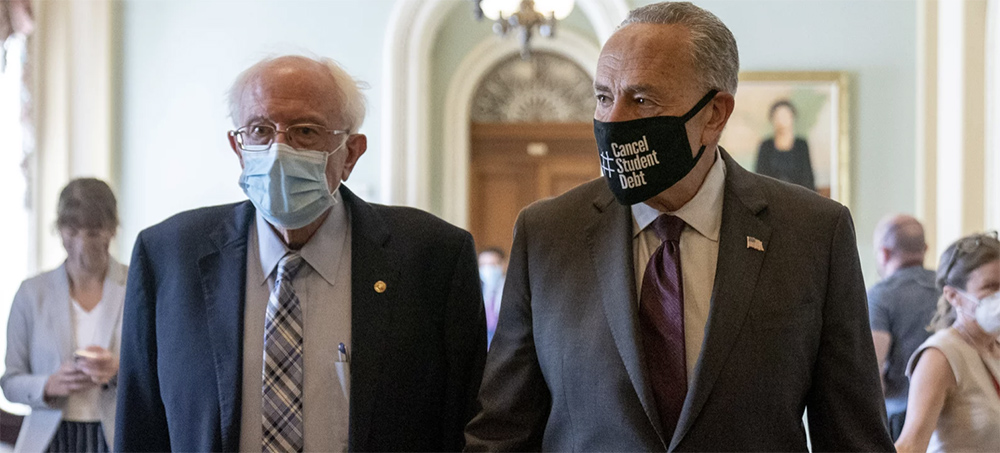 Bernie Sanders and Chuck Schumer the Capitol in September. (photo: Andrew Harnik/AP)
Bernie Sanders and Chuck Schumer the Capitol in September. (photo: Andrew Harnik/AP)
Speaking at Americans for Peace Now gala Thursday, Sen. Bernie Sanders explicitly calls for U.S. to attach conditions on military aid to Israel
“President [Joe] Biden is attempting to restore America’s position in the world as a supporter of human rights and dignity for all people. For us to provide an additional billion dollars in aid to Israel while ignoring the suffering of the people in Gaza would be wrong and unconscionable,” Sanders told Americans for Peace Now’s 40th anniversary gala on Thursday.
“That is why I asked Senate Majority Leader Chuck Schumer for his commitment to work with me to ensure that we significantly increase U.S. assistance for Palestinian people in Gaza in the very near future. And Sen. Schumer agreed to work with me on this,” he said.
Sanders’ remarks were made while directly addressing the controversy surrounding the $1 billion in emergency Iron Dome funding over the past several weeks. He described Iron Dome’s saving of civilian lives as “unquestionably a good thing and something I support.”
He stressed that the $1 billion was in supplemental funding on top of the already committed and delivered funds stipulated by the 2016 memorandum of understanding between the U.S. and Israel.
“Contrary to what some have claimed, Iron Dome has never been at risk of being defunded or decommissioned. If the goal of this supplemental funding is to help Israel replenish Iron Dome after the war that took place in May, in my view it would be irresponsible if we do not at the same time address the enormous destruction and suffering that caused the Palestinians in Gaza.”
Sanders had written Schumer prior to the bill's discussion on the Senate floor expressing his belief that the Gaza humanitarian aid and Iron Dome supplemental funding need to be linked and equal in value, effectively leveraging his vote in favor of the Iron Dome funding in exchange for committing $1 billion in Gaza aid. The letter was first reported by Jewish Currents.
The Vermont senator, who caucuses with the Democratic Party, told the gala that while he’s glad Benjamin Netanyahu is no longer in power, he is unimpressed with the policies of Prime Minister Naftali Bennett.
Sanders said the Trump administration and Netanyahu government were partners in working to “entrench a permanent one-state reality” where Israel controls the entire territory between the Mediterranean Sea and Jordan River in perpetuity, and where Palestinians are provided limited autonomy within a disconnected series of communities.
“Unfortunately, the current Israeli government led by Mr. Bennett is pursuing basically the same policy,” Sanders said. “They may dress it up in nice words like ‘shrinking the conflict,’ but it means the same thing: a one-state reality in which one people enjoy perpetual political dominance over another.”
Sanders said the U.S. must actively work to oppose and end the occupation, including being “willing to bring real pressure to bear, including restricting U.S. military aid in response to moves by either side that undermine the chances for peace.”
In perhaps his most explicit endorsement yet of conditioning U.S. military aid to Israel, he added: “The United States gives an enormous amount of aid to Israel – nearly $4 billion a year. It is totally appropriate for the United States to say what that aid may and may not be used for.
“I believe that we must adopt an evenhanded approach, one that upholds and strengthens international law regarding the protection of civilians as well as existing U.S. law, holding that the provision of U.S. military aid must not enable human rights abuses,” he continued.
Sanders said that if the United States is going to be a credible voice on human rights on the global stage, it must uphold international standards of human rights consistently, even when it is politically difficult.
“We must recognize that past Palestinian rights matter, Palestinian lives matter,” he told the audience. “This isn’t about singling out any one country. It’s about acting in an evenhanded way in the region, and making sure that American aid works to advance American interests and values, not undermine them.”
Sanders noted that he shares Americans for Peace Now’s stance on conditioning U.S. military aid to Israel. The left-wing organization became the first U.S. Zionist group to publicly endorse such a position last June, arguing that it is not a punitive measure and is in the best interest of both Israel and the United States.
“Sen. Sanders is well known for his commitment to security and justice, to peace and shared prosperity. Hearing him speak out in support of conditioning aid to Israel is a clear indicator that this concept is now part of the mainstream political discourse,” said Americans for Peace Now President and CEO Hadar Susskind.
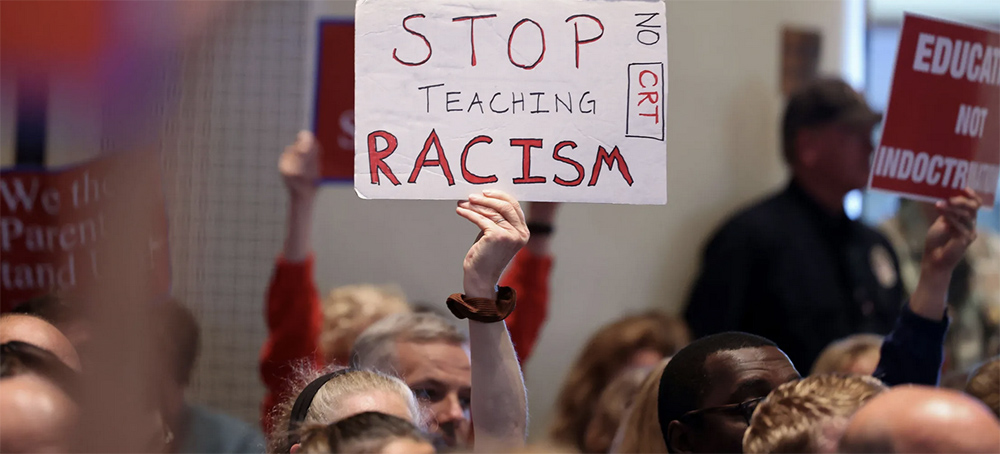 The rise in the frequency and intensity of outbursts at school-board meetings throughout the country has been labelled by one educator as 'a politics of petulance.' (photo: Evelyn Hockstein/Reuters/Alamy)
The rise in the frequency and intensity of outbursts at school-board meetings throughout the country has been labelled by one educator as 'a politics of petulance.' (photo: Evelyn Hockstein/Reuters/Alamy)
At one event, riled-up conservatives got so out of hand that the board chair halted the proceedings while the police cleared the room.
If you want some evidence of what the association and Garland were responding to, it’s easy to find in YouTube videos, and local news reports by the score—protesters fairly vibrating with January 6th energy as they disrupt school-board meetings, raging against mask mandates and other COVID precautions, or that favorite spectral horror, critical race theory. (The N.S.B.A. letter wearily explains that “critical race theory is not taught in public schools and remains a complex law school and graduate school subject well beyond the scope of a K-12 class.”) Since the summer, these confrontations have become social-media staples, familiar enough for “Saturday Night Live” to do a spot-on parody of them for its season opener.
After a school-board meeting in Williamson County, Tennessee, a group of protesters surrounded a doctor who had testified in favor of students wearing masks, shouting,“You’re a child abuser,” “We know who you are,” and “You’ll never be allowed in public again.” In San Diego County, California, in September, anti-mask protesters forced their way into a school-board meeting and tried to swear themselves in as the new, unelected members. At a chaotic meeting in Buncombe, North Carolina, parents opposed to a mask mandate announced that they, too, had “overthrown” the school board. Members of the far-right Proud Boys showed up twice, faces covered, at school-board meetings in Nashua, New Hampshire; in Vancouver, Oregon, Proud Boys gained access to school grounds during anti-mask protests, leading to a lockdown of the schools. At a Loudoun County, Virginia, school-board meeting, which was considering the district’s policies for transgender students and racial equity, riled-up conservatives got so out of hand that the board chair halted the proceedings while the police cleared the room.
Writing in the Washington Post recently, Adam Laats, a professor of education at Binghamton University SUNY, suggested that these outbursts can “be understood as a politics of petulance. At moments when American culture has taken some progressive turn, conservatives have consistently blamed a single culprit for indoctrinating vulnerable youth with radical ideas: public schools.” The attraction of school-board meetings for such displays of frustration, Laats told me, is “that they are generally so accessible; there’s an open-mike aspect to them.”
Laats has written a book, “The Other School Reformers,” about the history of conservative agitation around public schools, which makes clear that there are precedents for the current eruptions. Perhaps the most salient is a parents’ uprising in Kanawha County, West Virginia, in 1974, against the adoption of a new series of literature textbooks that some people thought promoted anti-American sentiments. The protests evolved into a boycott of the district’s schools, attracting national media attention, and soon turned violent. Textbook opponents shot up empty school buses and classrooms, bombed the school-board building, and threw rocks at parents who were still taking their children to school. Though the textbooks were ultimately adopted, and the rage over them seemed to fade, the West Virginia parents’ revolt had a wider impact on social conservatism. It helped launch the modern homeschooling and Christian-school movements, Heath Brown, a political scientist at John Jay College who has studied homeschooling activists, says, because some parents peeled away from public schools altogether in the aftermath of the boycott. The West Virginia textbook battle propelled the Heritage Foundation, then a small upstart organization, now a conservative-policy behemoth, onto the national stage. Heritage, Laats shows, provided free legal counsel to the protesters and drew connections between their local crusade and the broader defense of parental rights and liberties.
Conservative groups, including Heritage, are clearly hoping for a similar outcome today. In a piece on the Heritage Web site, Katharine Cornell Gorka points out what she saw as a bright side to all the at-home schooling that kids had been doing during the pandemic: “Whether it’s age-inappropriate sex education, critical race theory, or anti-American history, parents are seeing more of what their children are learning–thanks to COVID’s virtual learning–and they don’t like it.” And parental ire over masks and anti-racism education, stoked by national figures such as Tucker Carlson, on Fox, and Charlie Kirk, of Turning Point USA, has helped galvanize school-board recall efforts, promote new candidates for the boards and for other local offices, and push legislative bills. (Twenty-eight states have restricted the teaching of critical race theory, according to the education-news Web site Chalkbeat.) The rage has also spurred the growth of new organizations, with names like Moms for Liberty and No Left Turn in Education. An account of the movement in Politico notes that “tapping into the trickle-up anger over racism education is now a unifying force in campaigns for Congress, governor and among Republicans with presidential ambitions.”
Yet what’s most striking about so many of these school-board spectacles is not their political valence but the sense they exude of an anonymous comments section coming to life. They seem to represent the trollification of real-life local politics. There might be legitimate, even passionate, debate to be had about the wearing of masks. (In the United Kingdom, for instance, schoolchildren are not required to wear them, and even here not all public-health experts agree with the C.D.C. that they are necessary.) But, in so many cases, legitimate debate is not what’s on offer. Online, the thinking usually goes, people sometimes say the kinds of venomous things they wouldn’t in person; but, in these public forums, they seem all too ready to. They boo and jeer at people who express an opinion different from theirs. They find ways to bring up and rant about child-trafficking conspiracies. In one notorious case, in Murfreesboro, Tennessee, audience members laughed as a high-school junior, Grady Knox, described losing his grandmother to COVID. A woman behind him held a sign that read “Let our Kids Smile.” The “kids,” or, more often in this kind of rhetoric, “the children,” are usually props and symbols in these scenes; this is a parents’ war, and they mostly don’t want to hear the students speak. “At these school-board meetings, students have tried a lot to get on the docket,” Laats told me. “They’ve been on the agenda at some points, but they’re being frozen out of the discussion because parents are shouting and yelling and cops have to clear them out.”
Amy Evans, a pediatrician who practices near the sparsely vaccinated Grundy County, Tennessee, told the Washington Post this week that “she has seen more infections in the last two months than the rest of the pandemic combined.” (Just seventeen per cent of young people aged twelve to seventeen have been immunized in that state; nationwide, the figure is fifty-two per cent.) Some of her patients wanted to wear masks to school, she said, but were scared. “They were more concerned about the backlash from parents who would be opposed to masks,” she said. “The adults aren’t making it easy for kids to do the right thing.” The Justice Department’s efforts may help, though they could also provoke more fury against a familiar target: the federal government. The onus is on the adults in the room to give up on dreams of going viral and act better.
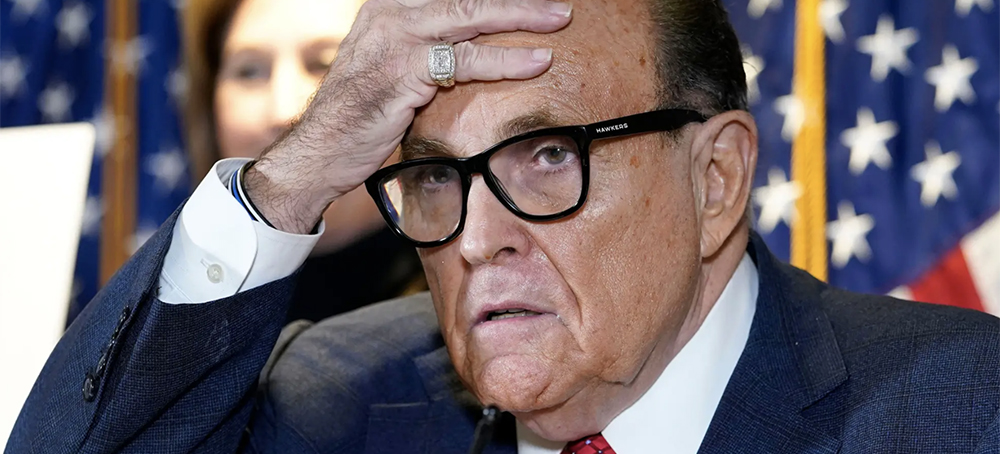 Rudy Giuliani. (photo: Jacquelyn Martin/AP)
Rudy Giuliani. (photo: Jacquelyn Martin/AP)
When it comes to legal representation, the former president got what he paid for
Giuliani made the admission during a deposition for a lawsuit filed against him and other Trump allies by Eric Coomer, a Dominion Voting Systems executive. In the suit, Coomer alleges that Giuliani and Sidney Powell, another attorney who worked for Trump and promoted election conspiracy theories, “made… Coomer… the face of their false [election] claims.”
During a deposition for the case, one of Coomer’s lawyers asked Giuliani if he ever received payment for representing the Trump campaign. Giuliani replied that he was not paid for his work for the campaign and only received reimbursements for expenses, which prompted Coomer’s attorney to ask why he would work without compensation.
“The president — the president ordered me to do it,” Giuliani said, according to Business Insider.
Giuliani’s admission he has been working for free is especially funny considering that The New York Times reported he asked Trump to pay him $20,000 per day for his work trying to overturn the election.
Giuliani said in his testimony that Trump brought him to the Oval Office on “either the 4th or the 5th” of November 2020, where he instructed him to “go over and take over the campaign, tell them you’re in charge.” Giuliani went on to file dozens of lawsuits on behalf of Trump alleging massive voter fraud with scant evidence, none of which was successful.
Trump may have been relieved that he was getting a free lawyer — especially considering all his other legal troubles — but according to Peril, the Bob Woodward and Robert Costa book about the Trump administration, Trump was not pleased that Giuliani was apparently his only choice for representation.
“None of the sane lawyers can represent me because they’ve been pressured,” Trump said, referring to Giuliani as “crazy” and a person who “says crazy shit,” according to the book. Maybe that’s why he insisted on a 100 percent discount on Giuliani’s rates.
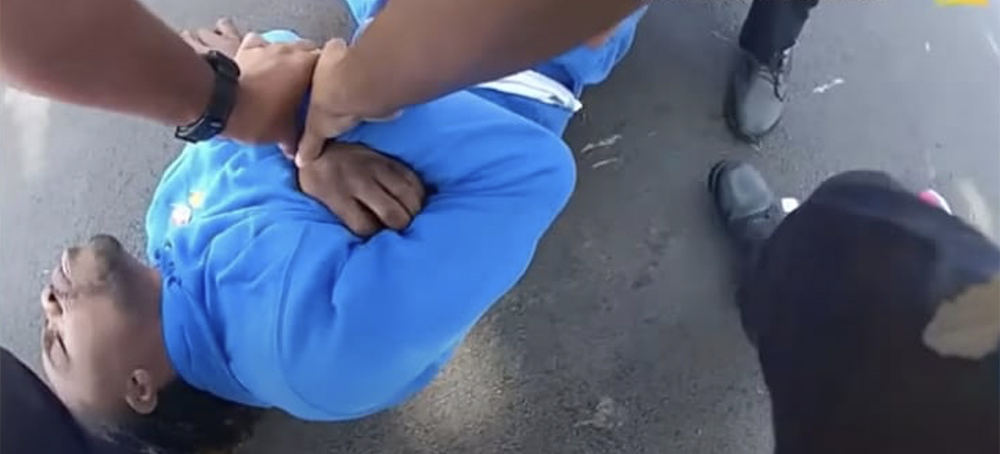 Body-camera footage shows officers in Dayton, Ohio, arresting 39-year-old Clifford D. Owensby, who says he is paraplegic, during a Sept. 30 traffic stop. (photo: Dayton Police Department/WP)
Body-camera footage shows officers in Dayton, Ohio, arresting 39-year-old Clifford D. Owensby, who says he is paraplegic, during a Sept. 30 traffic stop. (photo: Dayton Police Department/WP)
Clifford D. Owensby, 39, has filed a complaint with the Dayton Unit of the National Association for the Advancement of Colored People and spoke to an investigator, President Derrick L. Foward told The Washington Post on Saturday. Foward said the NAACP will be working “hand-in-hand” with Owensby’s legal counsel after his Sept. 30 arrest.
“To pull this man out of the car, by his hair — a paraplegic — is totally unacceptable, inhumane and sets a bad light on our great city of Dayton, Ohio,” Foward told The Post.
The city posted a recording of the footage Friday that had audio problems that made it unfit for publication by The Post. A spokesperson for the police department said access to the raw video footage was not immediately available.
On Friday, the department said its Bureau of Professional Standards will investigate the incident, including the officers’ conduct; they have not been publicly identified. Police cited Owensby for his window tint and for transporting a child without a car seat; a 3-year-old child was in the car at the time of the arrest, police said.
Officers had been monitoring a house Sept. 30 when they saw Owensby leave, according to Dayton police’s video statement released Friday. After finding prior drug charges, officers wanted a police K-9 to sniff around Owensby’s car, which required him to exit, police said.
The encounter grew tense after Owensby told officers he could not step out of his car because he is paraplegic. The officers said they would assist him.
“I don’t think that’s going to happen, sir,” Owensby replied in the video.
An officer clarified: He’s not asking Owensby. As Owensby and the police continued their back and forth, Owensby took out his phone and called someone to ask for help.
“You can cooperate and get out of the car, or I can drag you out of the car,” an officer told Owensby. “You see your two options here?”
Owensby asked to talk to the officer’s supervisor before both officers reach for Owensby’s arm to pull him out of the car.
“I’m a paraplegic, bro, you can hurt me!” Owensby yelled. Officers grabbed him by his hair and forced him to the ground before handcuffing and carrying him to the squad car with his feet dragging behind him.
The head of Dayton’s police union defended the officers’ actions.
“Sometimes the arrest of noncompliant individuals is not pretty, but is a necessary part of law enforcement to maintain public safety,” Jerome Dix, president of Dayton Fraternal Order of Police Lodge 44, said in a statement to the Dayton Daily News.
Dayton police were already under scrutiny after Jack Runser, a man who is deaf and mute, and has cerebral palsy, sued the department, saying he was injured and mistreated by police during a 2020 arrest.
The city has been working to address police use of force, part of what Shenise Turner-Sloss calls the “George Floyd” effect. Turner-Sloss, a city employee who is running for a seat on the Dayton City Commission in November’s election, said after Floyd’s murder by a former Minneapolis police officer last year that more than 100 residents took part in a local council on policing that led to more than 140 recommendations.
More than a year later, less than a quarter have been implemented, but among them was the call for police body cameras. In May, Dayton enacted a policy that requires police to wear them.
“One of the only reasons we know what happened [to Owensby] even took place is because one of the recommendations for the body cameras,” Turner-Sloss told The Post. She is among the slate of local candidates who have police policy on their agendas.
Owensby’s arrest probably will influence the results of November’s city elections, according to Foward. He said it could also factor into who will lead the police department.
“I think this case is going to have a tremendous impact on the selection of the next police chief,” said Foward, who is part of the effort to select the next chief.
Dayton’s interim police chief and city manager supported the Bureau of Professional Standards investigation. In a statement, Mayor Nan Whaley (D) called the incident “concerning” and stressed the city’s quick release of the video.
Phil Stinson, who leads the Police Integrity Research Group at Bowling Green State University in Ohio, called the body-camera footage “painful to watch,” and criticized what he saw as a “warrior mentality” at play.
“In a patrol officer’s mind-set, quite often once a decision has been made to arrest somebody, the terms are no longer negotiable,” Stinson told The Post. Police have broad discretion with whether, and how, to proceed. “The officer has many options,” he said.
Owensby, he said, did the best job of de-escalation by asking to speak to the officer’s supervisors.
“He was saying, let’s slow this down, let’s get a supervisor here. [Owensby] was the rational one,” Stinson said.
Leroy Moore, an activist for people with disabilities and who co-founded the group Krip Hop Nation, said the officers potentially put Owensby at risk with their removal.
“You could break bones, could pull a muscle, you could snap your neck and die right there,” Moore told The Post. “There are so many things that could happen in that situation.”
Foward said that he visited with Owensby on Saturday and that he is still anguished over the incident. Owensby, he said, told him that he was picking up cable TV boxes from rental properties he owns, including the house police had been watching, when the officers stopped him.
“He felt he was treated inhumanely, like a dog on the street,” Foward said. “He felt officers did not have empathy for him.”
 Sunday Song: Karen Dalton | Something On Your Mind
Sunday Song: Karen Dalton | Something On Your Mind
Jim Farber in The Guardian, ‘She went her own way’: the tragic and unusual life of folk singer Karen Dalton.
Allyson McCabe at NPR, New documentary remembers the tragic life of folk singer Karen Dalton
Lyrics Karen Dalton, Something On Your Mind
Written by, Dino Valenti (AKA) Chet Powers.
From the 1971 album, In My Own Time.
Something’s On Your Mind Lyrics
Yesterday, any way you made it was just fine.
So you turned your days into night-time.
Didn’t you know, you can’t make it without ever even trying?
And something’s on your mind, isn’t it?
Let these times show you that you’re breaking up the lines.
Leaving all your dreams too far behind.
Didn’t you see, you can’t make it without ever even trying?
And something’s on your mind.
Maybe another day you’ll want to feel another way, you can’t stop crying.
You haven’t got a thing to say, you feel you want to run away.
There’s no use trying, anyway,
I’ve seen the writing on the wall.
Who cannot maintain will always fall.
Well, you know, you can’t make it without ever even trying.
Something’s on your mind, isn’t it?
Tell the truth now, isn’t it?
Something’s on your mind, isn’t it?
Something’s on your mind.
 Bryde whale marooned on the bow of a ship in Japan. (photo: Business Insider)
Bryde whale marooned on the bow of a ship in Japan. (photo: Business Insider)
The Mizushima Coast Guard's Office confirmed to Insider that the whale found dead was a male Bryde whale, weighing five tons.
Locals caught sight of the whale as the tanker pulled into the harbor in the western city of Kurashiki last month. The images were first published in Yomiuri Shimbun, which is one of Japan's five national newspapers.
"I've lived for more than 80 years, but it's my first time [seeing a whale]," one bystander who saw the tanker said, according to the Daily Mail.
The ship's crew were reportedly unaware they had been dragging the whale with them as they sailed through the Pacific, according to Yomiuri Shimbun.
A spokesperson from the Mizushima Coast Guard Department said this was the first time they had witnessed anything like this. They would be investigating to see how such an incident can be prevented in the future.
The name of the ship was obscured in the photos distributed by the Coast Guard.
Ship strikes are known to be one of the leading causes of death for endangered and vulnerable whale populations, according to World Wide Fund for Nature (WWF).
Michael Fishbach, executive director and co-founder of the Great Whale Conservancy, an environmental NGO based in North Carolina, told Insider that a dozen whales are killed by a ship for each one that is recorded.
"Because of the negative buoyancy of the whales, they just sink straight to the bottom after they die, except on rare occasions like this one, where the whales are struck in the center of their body, and you have a situation as you see in the above image."
Fishbach told Insider: "There's no question that the number of whales killed by ships each year is in the 1000s each year."
When discussing what needs to change to save these whales, Fishbach said a body designated by the industry that can approach the shipping companies with a "calm, combined effort" to put forward measures and changes "to put a stop to this."
The whale specialist added that approximately 60% of the ships involved in whale strikes are container vessels.
Follow us on facebook and twitter!
PO Box 2043 / Citrus Heights, CA 95611

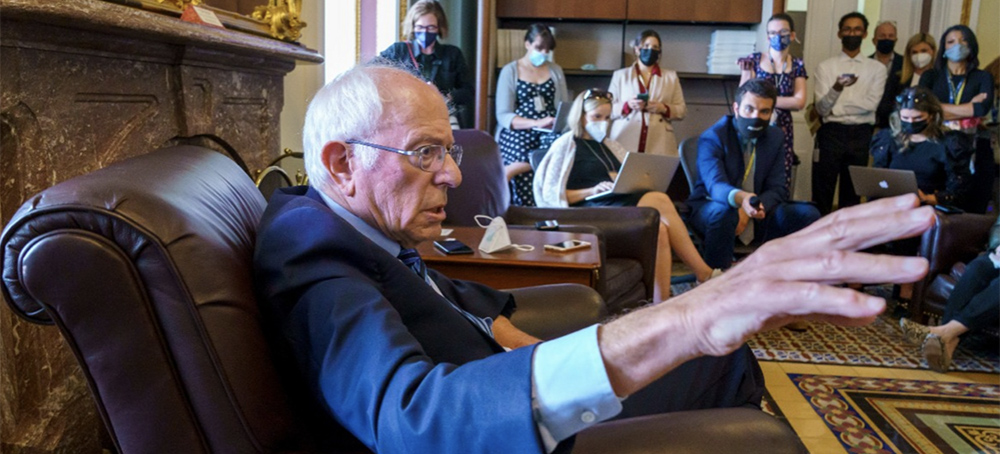

No comments:
Post a Comment